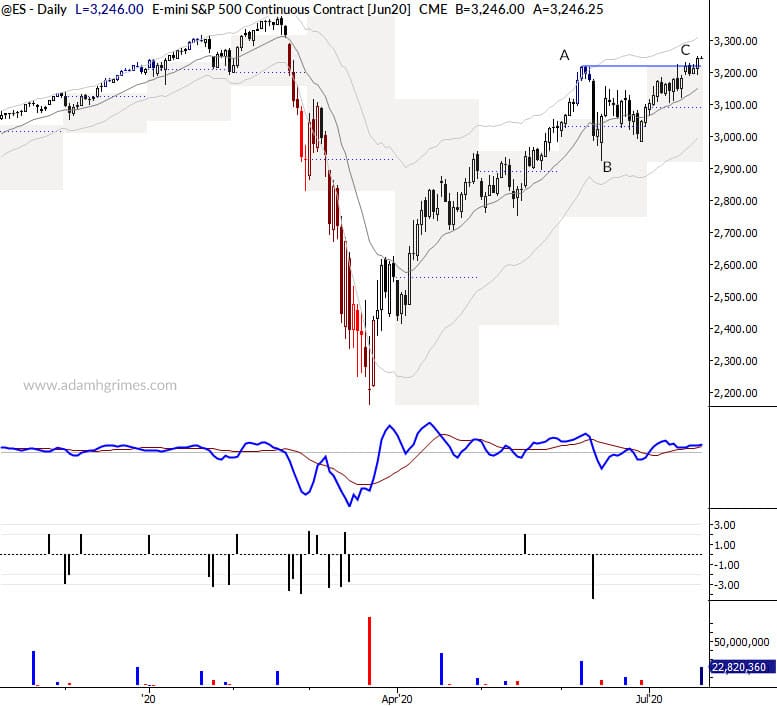This is how breakouts work: lessons from the S&P 500

Just a brief blog post here to share some pattern lessons from the S&P 500.
First, context matters, and that context is:
- Bullish because of the existing uptrend from the March 2020 lows. Trend integrity matters.
- Bullish because all-time highs just overhead provide a “magnetic” pull for indexes.
- Low volatility, due to the time of year, that typically features lower average volatility and relatively poor followthrough intraday. (Not that big spikes are impossible; they certainly happen, but the overall volatility tends to be lower.)
A few recent points deserve attention:
A: the uptrend became a bit overextended here and the market “got ahead of itself a little bit.” We can see this from the slightly “parabolic” curve up to A, and from the immediate collapse which followed.
B: That collapse might have set up another downswing, and was a reasonable spot to start looking for a larger selloff. This is not to say get short! In fact, exactly the opposite. We switched into information gathering mode, and the snapback at B showed us to stay far away from shorts.
C: Here’s the real lesson. If you are a short-term trader, spend some time looking at action around the highs every day last week. (The week ending 7/17/20.) This is what a functioning breakout looks like on the daily timeframe. Yes, we can find lots of textbook examples of clean tests, clean breaks, and sharp momentum beyond the breakout point, but what we see here is more normal. This is the usual.
This analysis has kept us solidly on the right side of the market. (And I’m not re-writing history here… I published these thoughts daily, on the spot, for our MarketLife members. We never delete any analysis, whether perfectly correct or wildly wrong (and we’re right far more often than not!))
These lessons and patterns can work for you, on any market and any timeframe.



